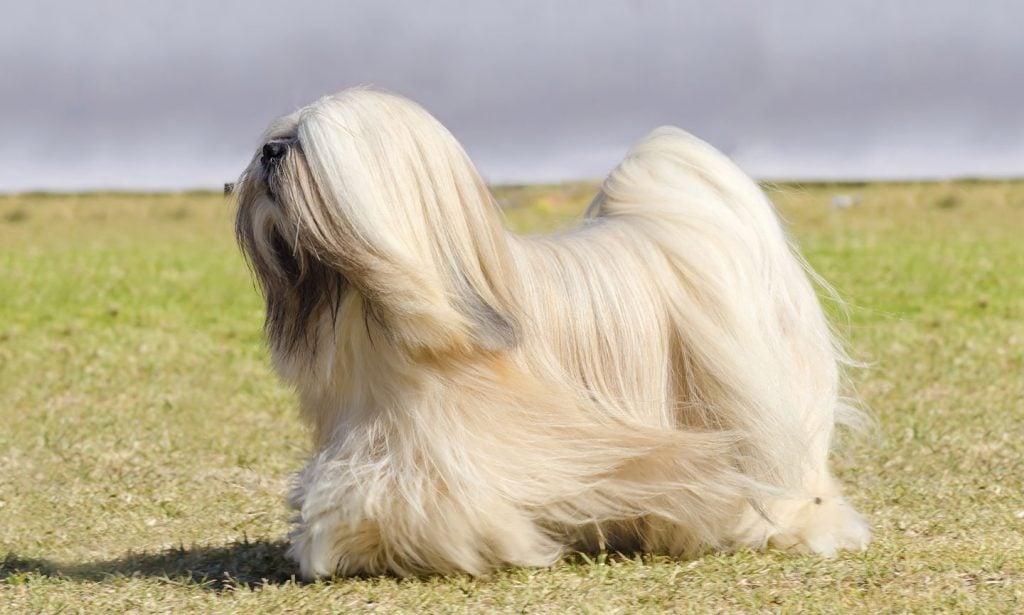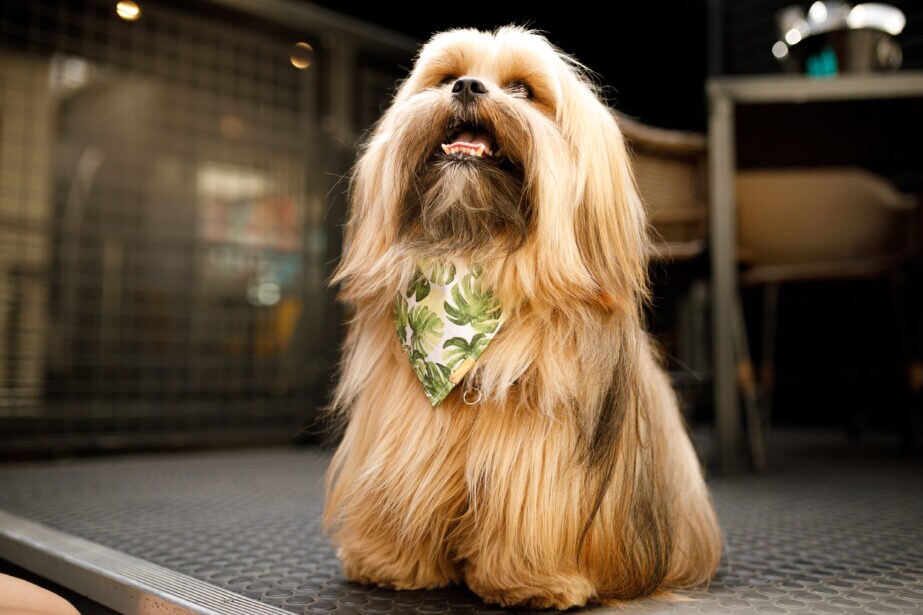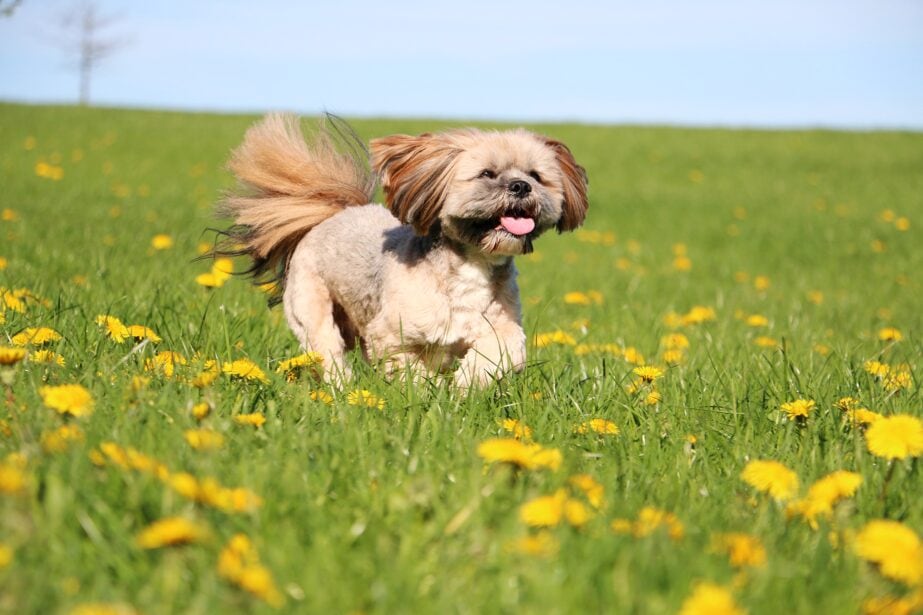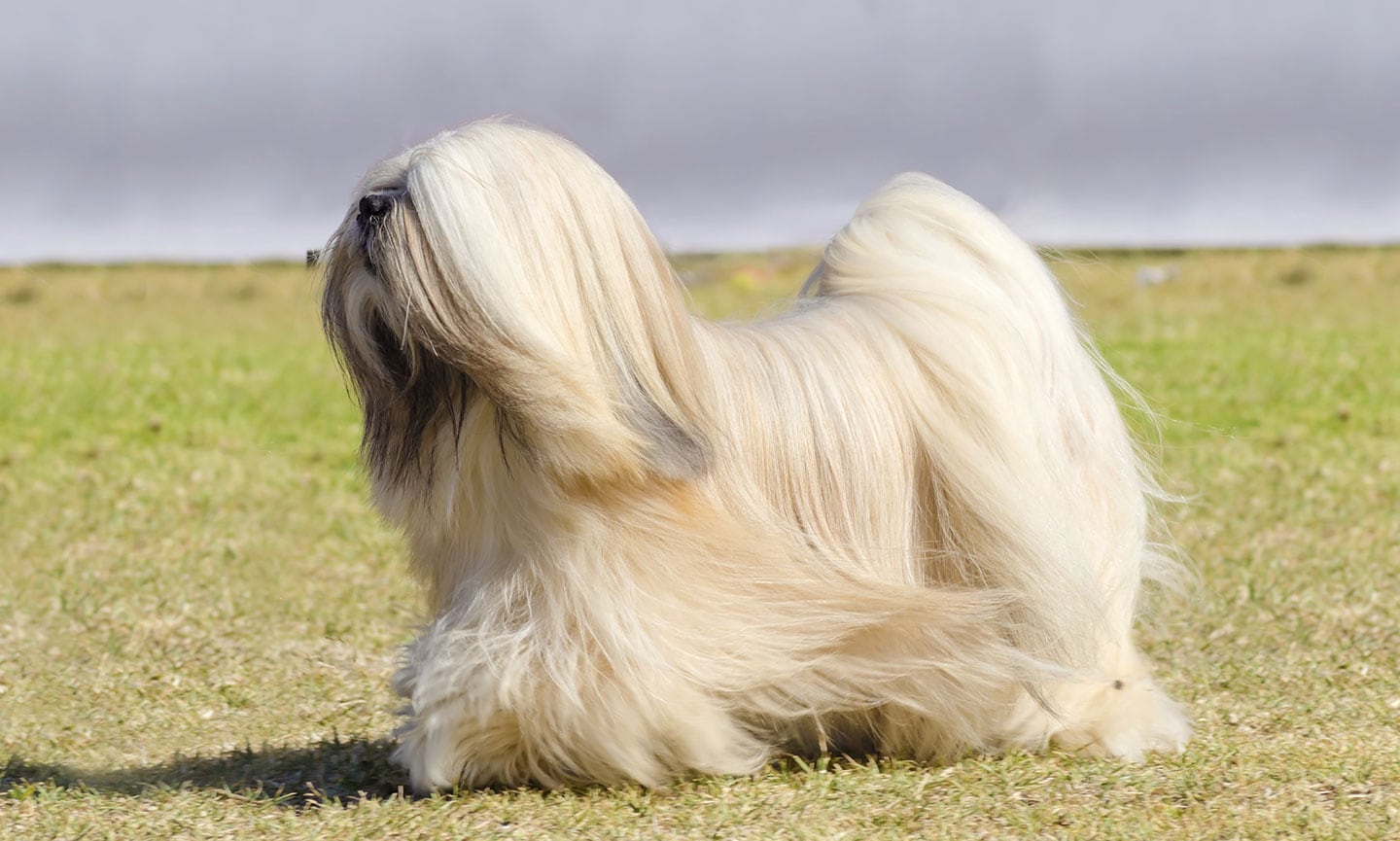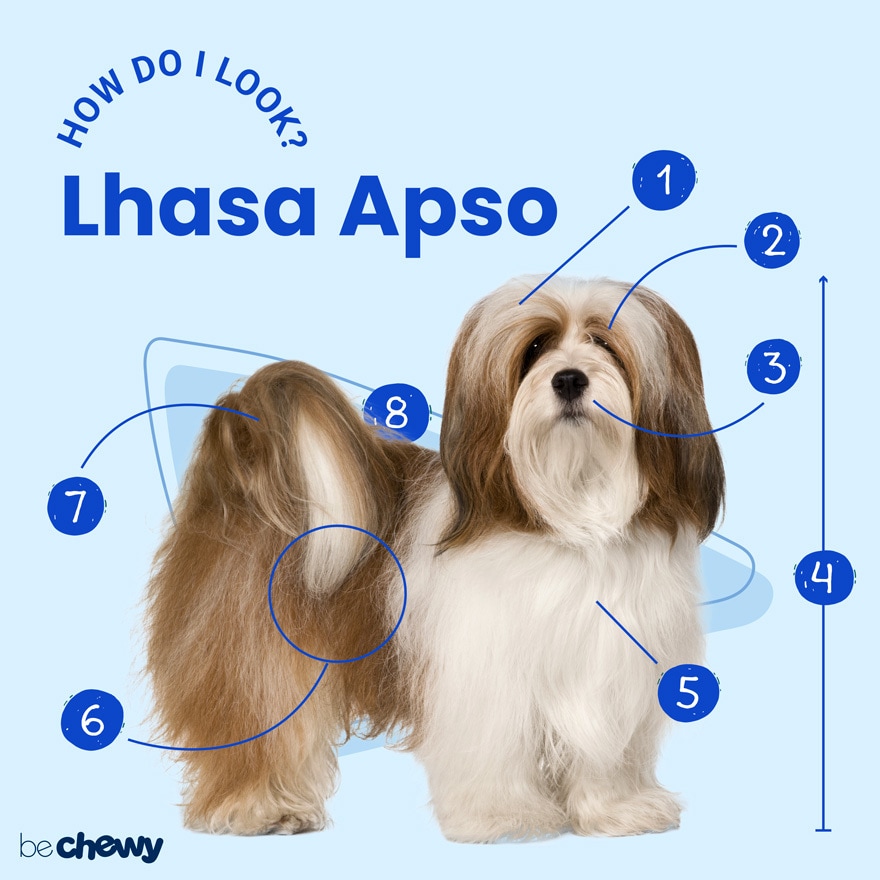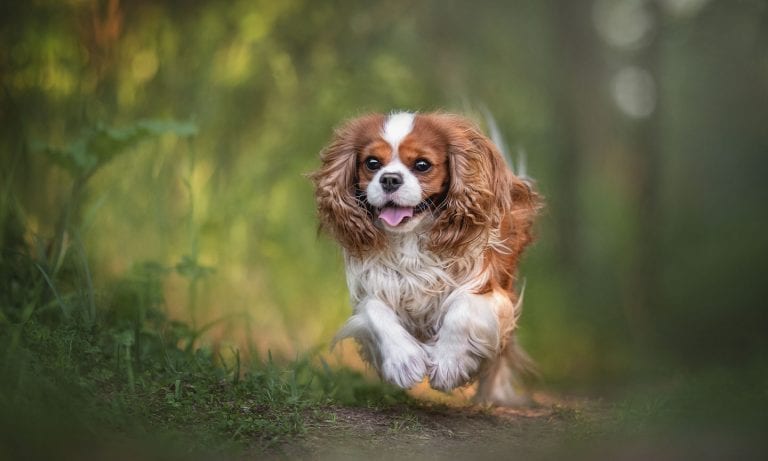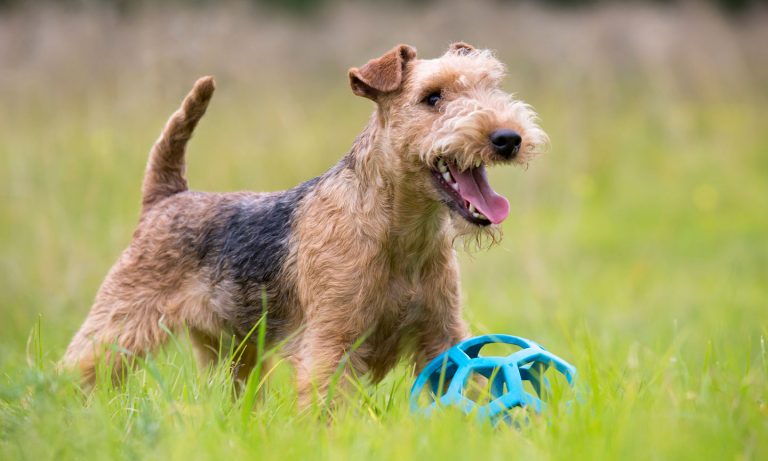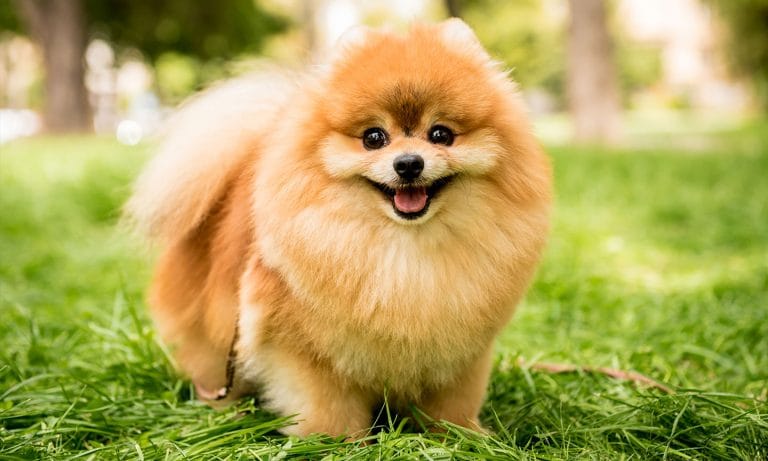The dignified Lhasa Apso may be the perfect lap dog today, but they once marched the halls of palaces and holy places, keeping watch over what happened inside. Lhasas fondly recall how they were respected and adored—they’re named for the most sacred city in Tibet, after all. So, naturally, they expect that level of respect from their present-day admirers. But their demands aren’t many, just a few treats now and then, a cozy lap to curl up in and their favorite person at their beck and call. It’s a rough job being adorable, but Lhasas are more than happy to fulfill the role.
Breed Snapshot
Temperament:
IntelligentLoyalPlayfulCoat Color:
BlackCreamGoldenGrizzleRedWhite
Best For
With a regal demeanor and moderate exercise needs, Lhasa Apsos are charming, independent companions who need daily play and grooming.
Lhasa Apso Temperament
The Lhasa Apso breed has a playful personality and often keeps their puppy behaviors longer than other dog breeds. Intelligent and curious, Lhasas have a moderate energy level and don’t require a lot of exercise. But they are stubborn, so they need consistent training to keep them well-behaved members of the family. The most important thing to a Lhasa Apso is to be wherever you are; they will suffer from separation anxiety when you’re gone for long.
Originating in Tibet as guard dogs (can you believe it?), these pups mainly apply for “lap dog” jobs today. Still, it’s important to start socializing your Lhasa Apso puppy and train them early to help them be welcoming to strangers.
Lhasa Apsos typically do better with older children but can get along with small children if they grow up together. Be sure to teach all children how to respectfully and safely interact with dogs. Lhasas don’t always do well with other dogs or cats, but with proper socialization, they can be trained to successfully live with other animals.
How to Care for a Lhasa Apso
The two biggest things about caring for a Lhasa Apso as a pet are their grooming and training needs. Some pet parents choose to keep the dog’s hair shorter to make it more manageable, but a long coat is kept if the pup will participate in dog shows. When it comes to training, it’s essential to not just teach them commands but to properly socialize them with other dogs and humans.
Lhasa Apso Health
Lhasa Apsos have a lifespan of 12 to 15 years, but, like any dog breed, they do have some health issues. It’s important that potential pup parents are aware of these health problems so they can help their dog live a full and happy life.
- Hereditary Kidney Dysfunction: Hereditary kidney dysfunction, also known as renal dysplasia or familial nephropathy, is an inherited condition where the kidneys do not develop properly and results in kidney failure at a young age. There is no cure and genetic screening testing is not available, but affected dogs should not be bred.
- Dental Disease: More than 80% of dogs over 3 years of age will suffer from dental disease, and smaller breeds may be even more susceptible. Besides the loss of teeth and painful gums, dental or periodontal disease can lead to systemic problems such as organ damage. Brushing your dog’s teeth daily and getting annual dental cleanings by your vet will help reduce the risk.
- Eye Problems: Lhasa Apsos are susceptible to several eye conditions, including cherry eye, dry eye and progressive retinal atrophy (PRA). Cherry eye occurs when your dog’s third eyelid slips out of place and swells. It’s usually due to weakened connective tissue and shows up as a pink or red bulge in the front corner of their eye. Surgery is typically required to fix it. Dry eye, when the dog doesn’t produce enough tears, is painful but often treatable with medicated drops. PRA is a degenerative disease that leads to blindness but is not painful for the dog. There is currently no treatment for PRA, but a dog with PRA can still live a happy life and genetic screening testing is available.
- Patellar Luxation: In this often-genetic disorder, the kneecap is able to slip out of place. Symptoms can include limping, pain and arthritis over time. While severe cases may require surgery, many cases can be treated with weight management and joint supplements.
Lhasa Apso History
Originating in Tibet, Lhasa Apsos are thought to have been first bred as far back as 800 B.C. to guard the interiors of palaces and Buddhist monasteries high in the Himalayan Mountains. Legend has it that the region’s protector is the Snow Lion, and the Lhasa Apso dog is the earthly manifestation of the mythical being. Tibet’s most sacred city is named Lhasa, so this breed is very special to the people of Tibet.
Lhasa Apsos were introduced to the United States by the 13th Dalai Lama, Thubten Gyatso. The Dalai Lama gifted two Lhasa Apsos to Charles Suydam Cutting, one of the first Westerners allowed in the forbidden city of Lhasa. Cutting brought the dogs back to the US in the early 1930s, and they became the first Tibetan breed recognized by the American Kennel Club in 1935. Lhasa Apsos are now one of three Tibetan breeds in the Non-Sporting group. (The group of AKC dogs that don’t neatly fit into another category.) The other two breeds are the Tibetan Spaniel and the Tibetan Terrier, and all three breeds share a trademark dense coat and curled tail.
Are you looking to add a Llasa Apso to your life? While Lhasa Apsos can cost several hundred dollars, expect to pay closer to $1,000 or more for a well-bred puppy. But for that, you often get a dog who’s been screened for health issues and may come with pedigree papers. You can also contact Lhasa Apso rescues, keep an eye out for the breed at local animal shelters, or search Chewy’s database of adoptable pets in your area.
FAQs
What are the most common Lhasa Apso mixes?
The most common Lhasa Apso mixes are:
- Lhasa Apso-Poodle mix (Lhasapoo)
- Lhasa Apso-Shih Tzu mix (Shih Apso)
- Lhasa Apso-Maltese mix (Lhatese)
- Lhasa Apso-Chihuahua mix (Chi Apso)
- Lhasa Apso-Yorkshire Terrier mix (Yorkie Apso, Lorkie or Lharkie)
- Lhasa Apso-Boston Terrier mix (Bosapso)
Note: These are not purebred dogs but mixed breeds.
Are Lhasa Apsos hypoallergenic?
While there is no such thing as a completely hypoallergenic dog, Lhasa Apsos do not shed or drool very much, making them a good option for those with pet allergies.
How do you pronounce Lhasa Apso?
You pronounce Lhasa Apso as laah-suh ap-soh.
What does Lhasa Apso mean?
The Lhasa Apso’s name is full of ancient meaning. Lhasa is the name of the most sacred city in all of Tibet. Their Tibetan name is Abso Seng Kye, which means Bark Lion Sentinel Dog.
How long do Lhasa Apsos live?
Lhasa Apsos live a long time, around 12 to 15 years, which gives you a lot of time to love on this wonderful pup.
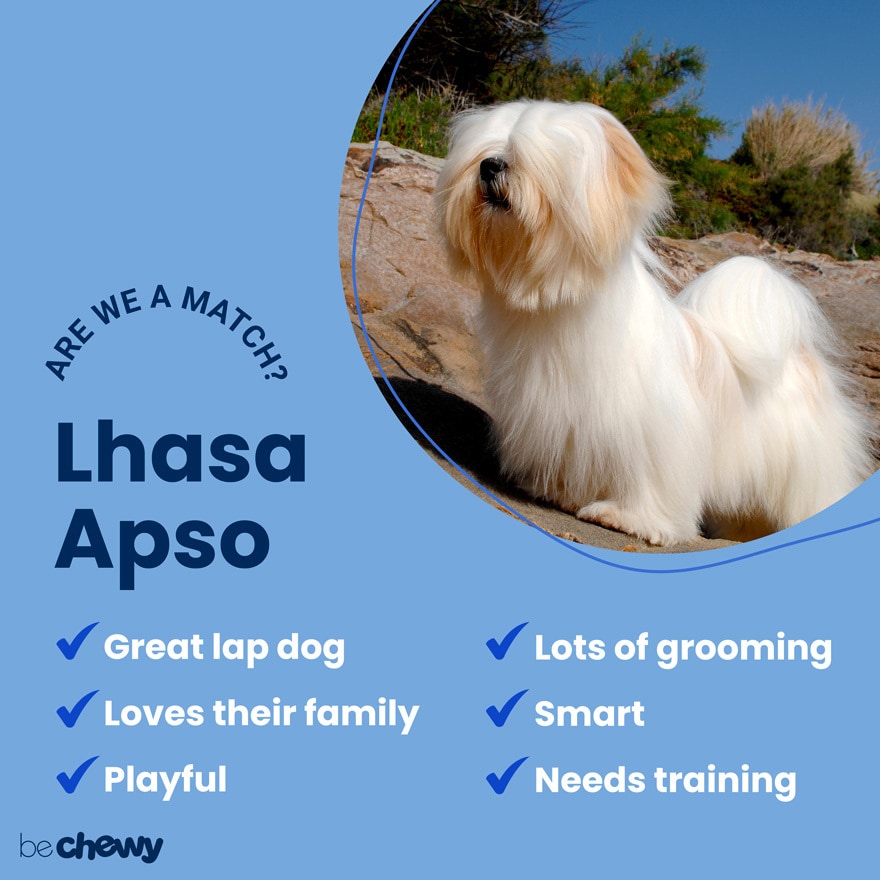
Top Takeaways
The Lhasa Apso makes for a wonderful companion. They are loyal lap dogs who are naturally curious. They require little exercise, but their long hair does require lots of regular grooming. Lhasa Apsos were bred as sentinel dogs, so it takes some training and socialization to help them to feel comfortable around others.
Expert input provided by veterinarian Dr. Mandy Boos, of Laurel Veterinary Clinic in Broomfield, Colo., and Mindy Jarvis, ABC-CPDT and CGC Evaluator, owner of Noble Beast Dog Training in Denver, Colo.
Breed characteristic ratings provided by veterinarian Dr. Sarah J. Wooten, DVM, CVJ, a veterinarian at Sheep Draw Veterinary Hospital in Greeley, Colorado; dog trainer and behavior consultant Irith Bloom, CPDT-KSA, CBCC-KA, CDBC, owner of The Sophisticated Dog, LLC, in Los Angeles; and certified animal behavior consultant Amy Shojai, CABC, in Sherman, Texas.
The health content was medically reviewed by Chewy vets.

Search for Adoptable Lhasa Apsos Near You
Female Names
- Lucy
- Bella
- Molly
- Lola
- Luna
- Coco
- Ellie
- Zoey
- Sophie
- Sadie
Male Names
- Teddy
- Charlie
- Milo
- Cooper
- Benji
- Max
- Toby
- Bentley
- Buddy
- Winston
Share:
